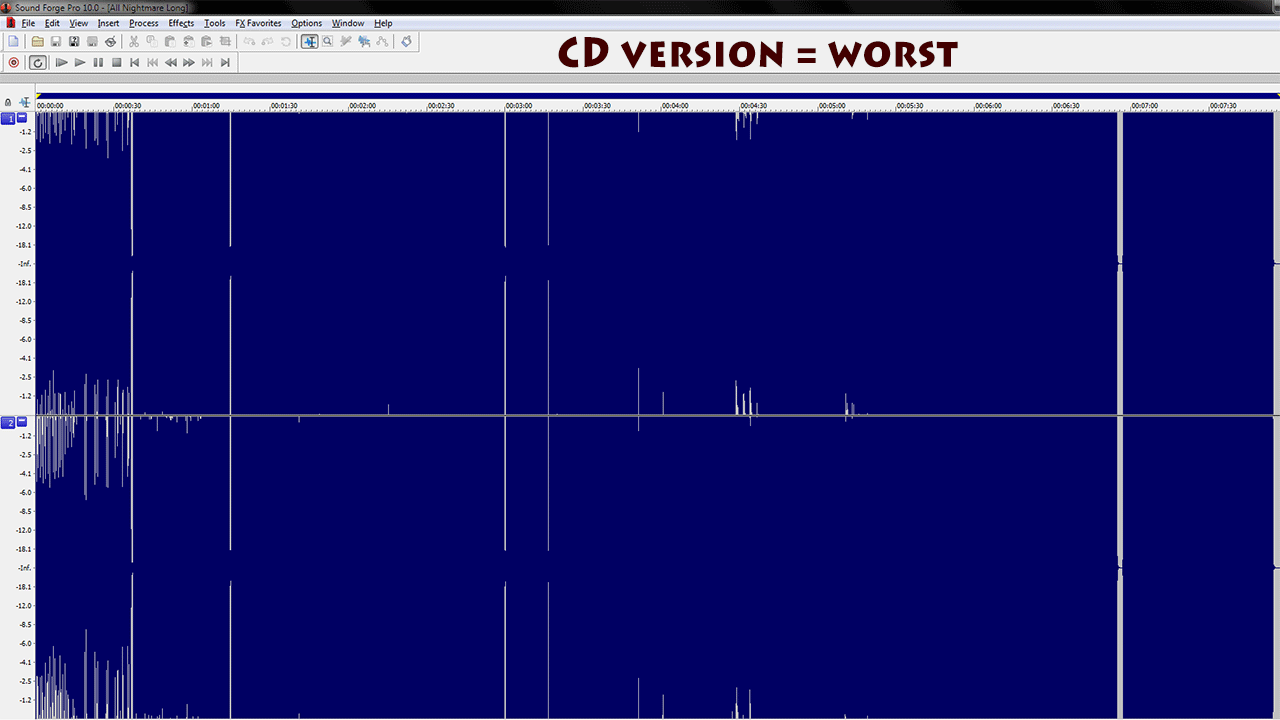As described earlier, a lot of the artistic process within popular music is based upon the balance between giving the people enjoyable music and standing out among the rest of popular music. This has always been the case. Due to physical limitations with vinyl records, the loudness war began when the CD was invented. The medium of CD allowed artists to explore more possibilities within the realm of music production.

Since these possibilities expanded, artists started experimenting. Adding compression and limit their tracks to get the perceived loudness to be as high as possible. An important motor for these actions was the desire to stand out among all other music.
The on-going battle to be the loudest song is the essence of the loudness war. However, clipping audio was not always taken into account by the artists, because they only cared about the loudest master. An extreme example is Metallica’s Death Magnetic. In the image below you see the extremely limited and clipping CD-version, compared to the iTunes and GarageBand versions. This song has been remastered since, the original clipping version is actually hard to find.


Many people thought that this meant the end of the loudness war, since there was audible clipping and audiences started complaining. It being an extreme case, these insane amounts of compression and limiting do happen in other songs as well, a lot of popular music has a small dynamic range and therefore a higher perceived loudness.
A crucial point to make here is that there has been a development in the loudness war over the last years. Streaming services like Apple Music, Spotify, YouTube and Tidal are using loudness normalization for all the audio played through their platforms. They all use normalization standards of round and about -14 LUFS. This means that any audio is dialled back to that level by the streaming service. Important to note is that this does not affect the dynamic range. It results in every song on the platform sounding like the same level of loudness, but the size of the dynamic range stays intact.

Spotify has 2 “normalization modes”. Track-based normalization and album-based normalization. When you listen to a single track in a playlist, the average loudness of that song is brought back to -14 LUFS, when you listen to an album or a track in an album, the individual tracks are brought back the same amount the average of the entire album differs from -14 LUFS. So if the average of the entire album is -8 LUFS, each track is brought back with -6 LUFS.
This process of normalization is considered the end of the Loudness War by some people. In a way, it is now clear to artists there is no sense in making their masters as loud as possible, since it will be dialled back. But we know perceived loudness is greatly influenced by the dynamic range. This stays un-affected by the normalization processes, therefore there is still battle going on between audial quality and perceived loudness.